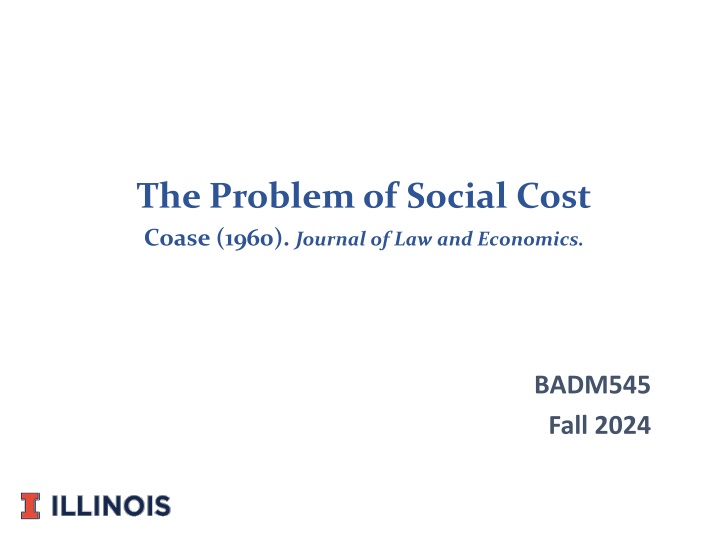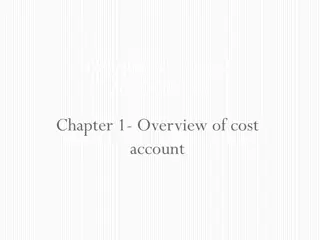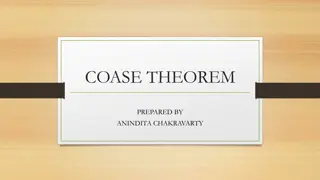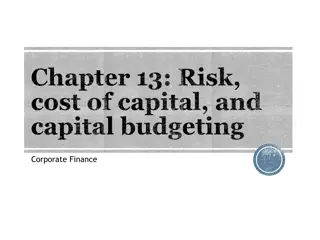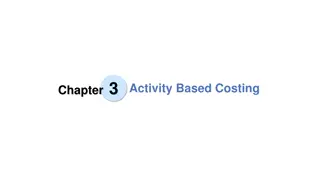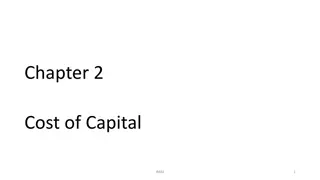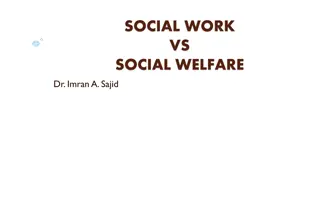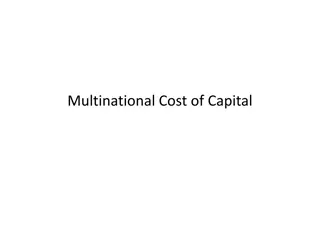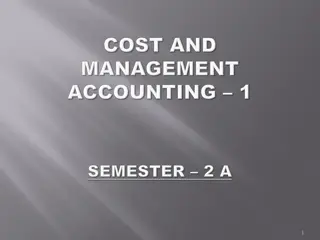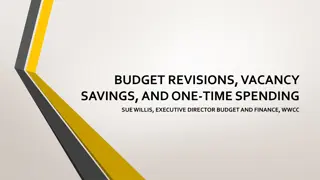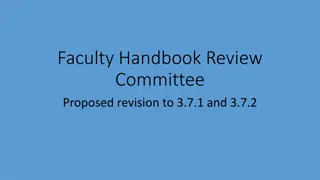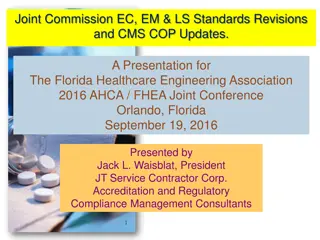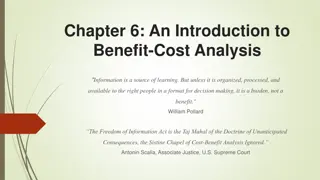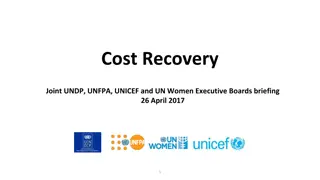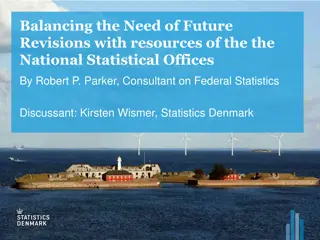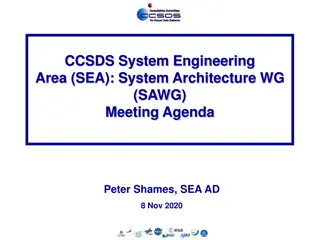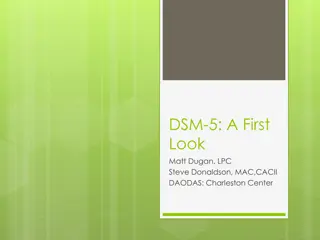The Problem of Social Cost: Coase's Analysis and Revisions
Coase (1960) revisited Pigou's (1920) approach on harmful actions and externalities, emphasizing the reciprocal nature of the problem. He proposed considering social net products alongside private products, emphasizing the importance of rights and efficient resource allocation. This critical analysis prompts a reevaluation of traditional perspectives on addressing negative externalities in economic and social arrangements.
Download Presentation

Please find below an Image/Link to download the presentation.
The content on the website is provided AS IS for your information and personal use only. It may not be sold, licensed, or shared on other websites without obtaining consent from the author.If you encounter any issues during the download, it is possible that the publisher has removed the file from their server.
You are allowed to download the files provided on this website for personal or commercial use, subject to the condition that they are used lawfully. All files are the property of their respective owners.
The content on the website is provided AS IS for your information and personal use only. It may not be sold, licensed, or shared on other websites without obtaining consent from the author.
E N D
Presentation Transcript
The Problem of Social Cost Coase (1960). Journal of Law and Economics. BADM545 Fall 2024
Research Question What is the appropriate social arrangement to solve the problem of harmful actions (negative externalities)? Types of social arrangements discussed: Market Firm Government Doing nothing 1
Research Question A standard example of business firms actions with harmful effects on others is that of a factory the smoke from which has harmful effects on those occupying neighborhood properties. Pigou s (1920) focus concerns a divergence between the private and the social product of the factory. The standard conclusion is that it would be desirable to make the owner of the factory liable for the damage caused to those injured by the smoke, or to place a tax on the factory owner varying with the amount of smoke and equivalent in money terms to the damage the smoke caused, or to exclude the factory from residential districts. 2
Summary The prior approach of Pigou(1920) in The Economics of Welfare must be revised as followed: The question should be asked differently, taking account of the reciprocal nature of the problem. The problem is to avoid the more serious harm. Social net products must be considered, in addition to private products Factors of production as rights (to do something which have a harmful effect) 3
Examples of harmful actions Prior approach (Pigou, 1920) A harms B Noise machineries of a confectioner Straying cattle, which destroys crops Dirt and noise from a demolition harms the business of a nearby hotel Noise from the nearby railway/airport disturbed an otherwise quiet house in the neighborhood 4
Examples of harmful actions Suggested: thereciprocal nature of the problem A harms B B harms A Noise machineries of a confectioner Doctor renders reduced supply of confectionery products Straying cattle destroys crops Crop supply renders reduced supply of meats Dirt and noise from a demolition harms the business of a nearby hotel Hotel business renders the reduced benefits of new construction in the demolition site Noise from the nearby railway/airport disturbed an otherwise quite house in the neighbor Keeping the area quiet will be at the expense of the benefits of having railway/airport 5
Solution based on the market The Coase Theorem: When there is no cost for using the market or price mechanism (e.g., identifying actors, bargaining, contracting, monitoring), implying low transaction costs and perfect competition. The efficient resource allocation will be identical, i.e., both allocations are Pareto optimal, regardless of whether the harming party is liable or not. Resource allocation will be optimal, as the economic value of the additional production will be weighed against the costs for both parties, and the reduction in the value of production elsewhere will also be considered. 6
The Cost of Market Transactions Taken Into Account To carry out a market transaction it is necessary to: Discover who it is that one wishes to deal with, To inform people that one wishes to deal and on what terms, To conduct negotiations leading up to a bargain, To draw up the contract, To undertake the inspection needed to make sure that the terms of the contract are being observed, and so on. These operations are often sufficiently costly to prevent many transactions that would be carried out in the real world in which the pricing system worked without cost. 7
When the cost of market transactions are present We need to consider costs and benefits of alternative arrangements to markets, such as: the firm, government, and do nothing in making the boundary choice of arrangements. The firm: resource allocation (rearrangement of production) through an administrative decision. Recall Coase, 1937. Problem: it might be too costly to bring diverse activities within the control of a single organization, e.g., high administrative costs. Government regulation: a super-firm , using power and obedience, can completely avoid the market Problem: unlike some prior beliefs, governmental administration can be extremely costly or inefficient. Subject to political pressures and without competitive check. Immune to reciprocal costs. Also, policies as blunt instruments which lack context or nuance. Doing nothing Given the costs of all the other options, is doing nothing a better option? 8
Legal determinants of rights and the economic problem When market transactions are costly It is often difficult to change the arrangement of rights established by the law. In such cases, the court should understand the economic consequences of alternative decisions Judges in common law countries (British and American cases) tend to be cognizant about the economic implications, comparing utility and harm. Some directly compare gains and losses Some indirectly recognize as discussing reasonable or common or ordinary use Decisions should be based on the detailed investigation of actual results Decisions about whether a case is a nuisance (harm, such as smoke, dust, noise that are illegal) or not depend on the circumstances (e.g., character of the neighborhood) 9
What does government do? (As many economist tend to believe) government indeed extends the scope of nuisance and regulate harms produced However, there are many governmental projects that create those harms Also, governments are responsible for a long list of legalized nuisances. Example: permitting railroads and airport construction near suburban neighborhoods. Government might have a role, but there is a danger for the extensive intervention by the government 10
Suggestions for a change of approach Analysis in terms of divergencies between private and social products is necessary The opportunity cost approach might not be enough All spheres of life should be considered Comparison should be between the original situation, and the new situation that would be possible Rather than comparing a state of laissez faire and an ideal world Factor of productions should be thought of as rights to perform certain actions Rather than as a physical entity which the business-person acquires and uses Discussion: How about the perception of fairness and equity? 11
